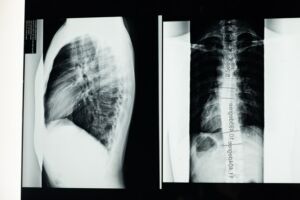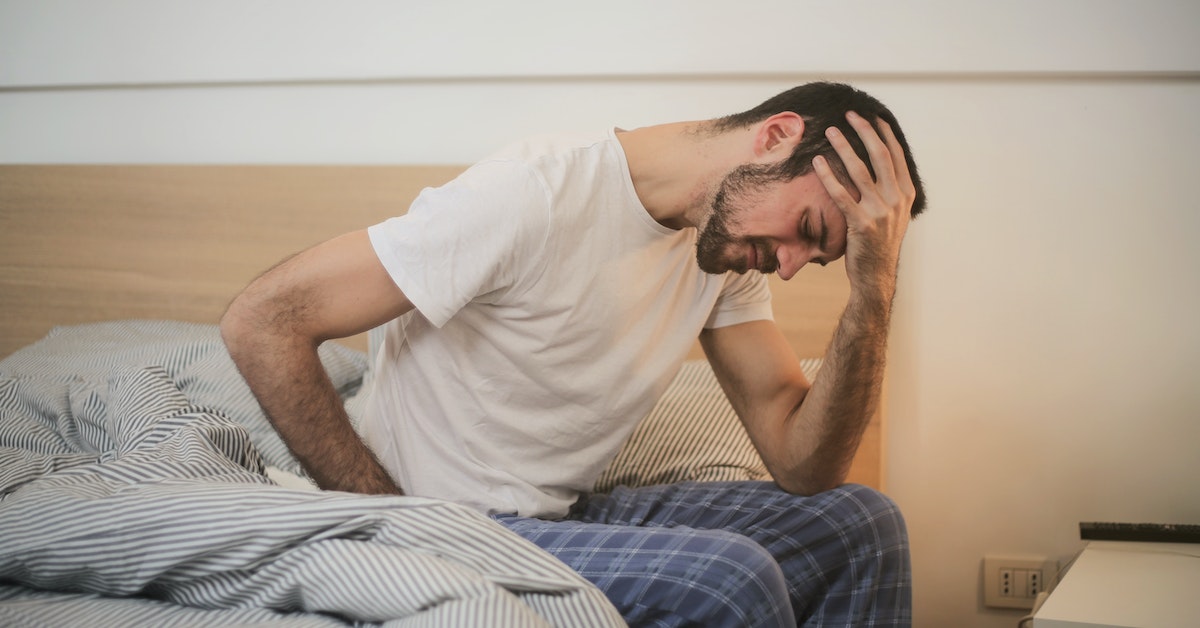You suffered a back injury, cared for it at home, took some steroids, and went to a few PT sessions, but your back still hurts several weeks or months later. Sound familiar? Scenarios like these are common, and chronic back pain affects millions of Americans yearly. The first step to seeking effective treatment is understanding the causes of chronic back pain. Some of these causes are difficult to pinpoint using diagnostic tools like CT scans and MRI. Seeking surgery or other invasive treatment before finding the exact cause can do more harm than good.
Here are five possible reasons why your back still hurts.

1. A Stalled Healing Process
The instant your body detects an injury, it sends specialized cells to the area to begin the four-stage healing process. These cells travel via blood flow to the injury and begin forming a scab and fighting infection. This initial stage of healing causes inflammation. Inflammation has become a dirty word, but it’s a necessary step in healing. Unfortunately, pain is a major side effect of inflammation. When everything functions as it should, the inflammatory stage is temporary, and the body turns to other tasks like building and strengthening new tissues. Sometimes the healing process stalls, leaving the area inflamed with new, tender tissue that is easily reinjured.
A stalled healing process often happens in areas that don’t receive robust blood flow. Imagine paramedics trying to get somewhere, but there’s only one two-lane road clogged with traffic. Your healing cells encounter a similar problem in areas with less blood flow. Spinal structures, including discs and facet joints, don’t receive as much blood flow as muscles do. Other joints in your body also have this problem, as do tough fibrous tissues like tendons and ligaments.
A stalled healing process could be to blame if you suffered a herniated disc or trauma to another spinal structure and are still in pain more than twelve weeks after your initial injury. Treatments like spinal decompression therapy bring more blood flow to spinal structures and can help them heal faster. Injured ligaments and tendons can benefit from massage or cold laser therapy, encouraging blood flow and decreasing inflammation.
2. Overly Sensitive Nerves
One of the most frustrating things chronic pain patients experience is being told that their injuries have healed, but their nervous system is still sending out pain signals. You might wonder why this is happening and if anything can be done about it.
Nerve pain isn’t easy to treat, but you do have options. First, it’s important to understand why your nerves send inappropriate pain signals. This is a complicated problem, and researchers don’t agree on all the reasons. One thing they do know is that nerves that have been injured (especially repeatedly) can become overly sensitive, and treatments that desensitize these nerves can be effective for chronic pain.
According to current research, several neurotransmitters, including endogenous opioids (the opioid-like chemicals produced by your brain), can affect pain signals. People with anxiety, depression, or PTSD may have altered neurotransmitter levels that make them more prone to chronic pain. However, having one of these diagnoses is not a guarantee of chronic nerve pain. While treating your mental health conditions and managing stress may decrease the severity of nerve pain, it doesn’t always heal it. Treatments like massage and acupuncture that help the body produce endorphins (an opioid) can mitigate pain symptoms, but taking prescription opioids can do more harm than good.
Some patients can experience relief with spinal decompression therapy, which can desensitize and calm nerve roots. For overactive nerves in other areas, cold laser therapy has been shown to calm nerves and help them heal.

3. Incorrect Diagnosis or Treatment
The back is a complex piece of engineering. The central structure of your back is the spinal column, made up of vertebrae, discs, joints, and nerves. It’s held together and supported by ligaments, tendons, and muscles. Figuring out which of these structures is causing pain can be challenging. To make matters worse, it’s common for pain to radiate out and occur in an area distant from the injury. For instance, a bulging disc in your middle back might cause lower back pain. While some injuries appear clearly in a diagnostic image, others can be difficult to see. If, upon examination, your doctor thought you were suffering from a muscle tear and treated you accordingly but didn’t realize you had an injured disc, you’ll experience pain longer than expected.
While disc injuries sometimes heal on their own, many require specific treatment. Spinal adjustments or spinal decompression therapy can move bulging discs back into place. Failing to use these treatments promptly can lead to prolonged pain, as the disc will continue pushing on nerves until it’s moved. Spinal decompression therapy is also the most effective treatment for herniated and degenerated discs.
When a diagnosis has proved impossible, treatment with non-invasive methods that target the spine as a whole is recommended. Spinal adjustment and spinal decompression therapy can treat large sections of the spine and don’t require that the problem be seen to be treated.

4. Lifestyle Factors
Your chronic pain might actually be recurring pain. Poor posture and bad lifting practices can cause frequent injury and pain. Hunching over your desk or looking down at your phone puts pressure on the spinal column and disrupts normal spinal curves. These postures also cause small muscle tears that fill with tough scar tissue. The result is recurring pain, stiffness, and headaches. All the treatments in the world won’t resolve these issues if you don’t improve your posture and take other steps to prevent the ongoing injuries to your back.
Frequently lifting, pushing, pulling, or engaging in other strenuous activities without using proper techniques can also reoccuring pain that seems chronic.
Both of these issues can be resolved with coaching from your chiropractor and posture correcting exercises you can do at home. Your chiropractor can help you build your core strength and practice good posture for different activities. He can also advise you on simple ways to make your workspace more ergonomic.
Other lifestyle issues like obesity, smoking, and poor diet can also contribute to recurrent or chronic pain. Smokers have even less circulation in spinal structures than non-smokers do. Smoking and a bad diet contribute to excess inflammation. Obesity puts a greater strain on the back, hips, and knees and raises your risk of injury and arthritis. Taking care of your overall health can prevent and treat chronic back pain.

5. Underlying Illness
Sometimes chronic back pain is caused by underlying conditions or congenital malformation. These include spinal stenosis, arthritis of the facet joints, or pelvic floor dysfunction. These conditions are treatable, but spinal stenosis and arthritis are typically not curable. The goal should be pain reduction and management. Pelvic floor dysfunction is sometimes overlooked as a cause of back pain and requires specific physical therapy with a provider who is experienced with it.
Though rare, more serious conditions can also cause back pain, including infections and cancer. You should see your doctor immediately if your pain occurs with a fever, weakness, or unexplained weight loss.
Conditions that don’t involve the spine or back muscles can also cause back pain. Back pain is a common symptom of kidney infections, bladder problems, and conditions that affect the uterus and ovaries.
Since back pain can have many causes, ranging from mild to serious, you should never hesitate to see a provider. Prompt evaluation is your best chance for pain relief and catching serious conditions early.
Treatment for Chronic Back Pain in Murfreesboro
At Stanlick Chiropractic, we understand that back pain has diverse causes and offer a range of treatments to our patients. We are committed to finding effective, personalized solutions for people experiencing chronic pain. Schedule a consultation today to find out how we can help you get out of pain and back to life.


